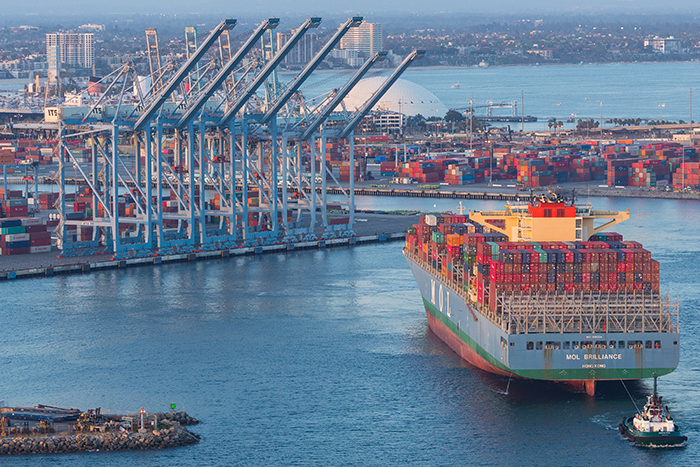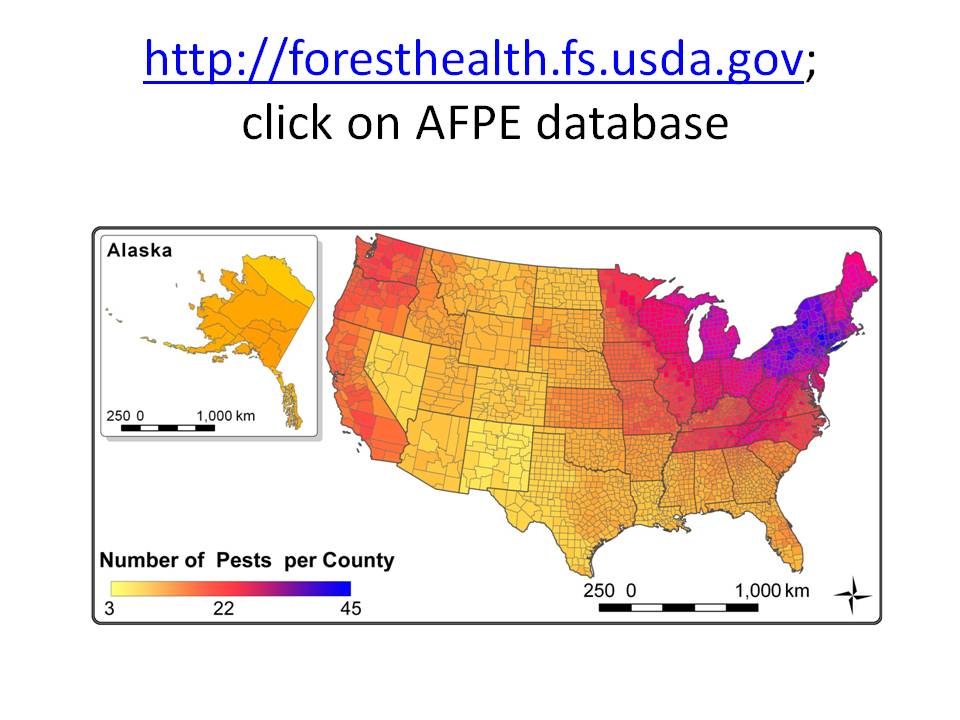
The U.S. continued to import large amounts of goods from Asia in the first three months of 2022. During this period, total volume imported from Asia increased to 1.62 million TEU — 31.1% higher than in the same period in pre-pandemic 2019 (Mogelluzzo, B. April 22, 2022).
Due to congestion in West Coast ports, the proportion of Asian goods entering the country through East Coast and Gulf Coast ports also rose in the first quarter of 2022 compared to the same period in 2021: by about 33% along the Atlantic and 6% along the Gulf (Mogelluzzo, B. April 22, 2022). Increases were particularly steep in the south: 9.2% at Savannah; 12.5% at Norfolk; 26% at Charleston; and an astonishing 52.1% through Houston.
Due to Covid-19-related port and factory shutdowns in China, a rising share of imports to the U.S. in 2022 came from other countries in Asia. Imports grew especially from Vietnam but also Thailand, Malaysia, Indonesia, and South Korea (Wallis, K. May 11, 2022).

Starting in May 2022, West Coast ports began to recover their dominant role – probably because East Coast and Gulf Coast ports were now suffering their own congestion-related delays. Virtually all the restored traffic entered through the Los Angeles-Long Beach port complex; these ports imported a monthly record of 851,956 TEU from Asia in May. Imports through Seattle and Tacoma actually declined from the previous month, while Oakland’s imports from Asia remained steady (Mongelluzzo, June 15, 2022).
Thus, the “baseline” for US imports from Asia each month is now 20 to 30% higher than it was before COVID-19 disrupted supply chains (Mongelluzzo, June 15, 2022).
East Coast Ports Deepening and Expanding to Accept Larger Ships
Meanwhile, East Coast ports continue efforts to deepen their channels and expand their infrastructure so that they can service the larger container ships.
In late June 2022 the US Army Corps of Engineers approved the plan by the Port of New York-New Jersey (PANYNJ) to dredge channels to accommodate more post-Panamax ships. The largest ship that has called at NY-NJ was 16,000 TEU; port officials hope to accommodate ships up to 21,000 TEU, apparently using current capacity (Angell, June 23, 2022; Angell, May 27, 2022). PANYNJ Port Director Bethann Rooney says the port expects to see annual volumes rise to 17 million TEU by 2050, almost double its throughput in 2021 (Angell, May 27, 2022).
The Corps found the PANYNJ plan to be both environmentally and economically sound. The Corps will now seek Congressional funding for the project in the 2024 Water Resources Development Act; the Port Authority will also contribute to the project (Angell, June 23, 2022). We need to be more active in commenting on these port expansion environmental assessments!
The Port of NY-NJ is also seeking to expand storage facilities for incoming shipping containers. Several sites are at various stages of consideration and development; one – part of the “Port Ivory” site on Staten Island – includes a tidal wetland. A November 2021 application by PANYNJ a change-in-use permit is under review by New York State Department of Environmental Conservation (NYSDEC) (Angell, May 27, 2022). Can those interested in environmental protection express their opposition?
The Port of Charleston is expected to finish dredging its inner harbor and channel this year. Last year, the Port of Virginia has received initial funding for a dredging project that should be completed by 2024 (Angell, May 27, 2022).

As we know, numerous tree-killing insects have been introduced from Asia to the ecologically similar forests of eastern North America – often in wood packaging. ALB in Charleston These include Asian longhorned beetle, emerald ash borer, redbay ambrosia beetle, phytophagous and Kuroshia shot hole borers (for profiles of each visit here). Indeed, 15 of 16 non-native bark beetles in the Xyleborini (a tribe of ambrosia beetles) detected in the United States since 2000 are from Asia (Bob Rabaglia, USFS Forest Health Protection, presentation at IUFRO meeting in Prague, September 2021).
Growing numbers of containers entering Atlantic and Gulf Coast ports raises the risk of additional introductions. Insects associated with imports from semi-tropical ports in Vietnam entering the U.S. through Gulf or southern Atlantic ports might well find these regions hospitable. I worry, for example, about the polyphagous and Kuroshio shot hole borers – surely the Gulf Coast provides a more suitable environment for insects from Vietnam and Taiwan than does southern California? And known hosts are present – box elder, willows, sweetgum, mimosa, tree of heaven …
Of course, containers are then sent on from the ports to distribution centers – presenting opportunities for pest introductions in inland areas. New or expanded distribution centers include Atlanta and Appalachian Regional Port and Statesboro Airport in Georgia, Rocky Mount, North Carolina; Huntsville, Alabama; Portsmouth and Front Royal, Virginia (Ashe and Angell July 5, 2022). Front Royal is at the northern end of Shenandoah National Park!

European Trade
Meanwhile, U.S. imports from Europe continued at high levels – although they were not breaking records. In the first half of 2022, the U.S. imported just under 1.77 million TEU from Europe. The largest category of commodity from Northern Europe was foodstuffs — 410,930 TEU. Machinery and mechanical products imports – the type of good often associated with infested wood packaging – numbered 228,521 TEU. Vehicles, aircraft, and vessels imports were 107,526 TEU. “Miscellaneous manufactured articles” that include furniture, bedding, mattresses, and light fittings were 132,979 TEU. I expect – although the source does not so state – that this last category includes decorative stone and tile – again, a category often associated with infested wood packaging.
While fewer damaging pests have been introduced from Europe in recent decades, the risk remains.
Updated Haack Analysis
As has been documented repeatedly (e.g., my blogs, including 248), the current approach to curtailing pest introductions associated with wood packaging is not sufficiently effective. Customs officials continue to detect live quarantine pests in wood packaging as it enters the country. However, the exact level of this threat is unclear since the only assessment was based on data from 2009 (Haack et al., 2014). I eagerly await the results of Bob Haack’s updated analysis, which I hope will be published soon.
SOURCES
Angell, M. NY-NJ port lays groundwork for larger ships ahead of dredging. May 27, 2022. https://www.joc.com/port-news/us-ports/port-new-york-and-new-jersey/ny-nj-port-lays-groundwork-larger-ships-ahead-dredging_20220527.html
Angell, M. NY-NJ deepening study gets US Army Corps blessing. June 23, 2022. https://www.joc.com/port-news/us-ports/port-new-york-and-new-jersey/ny-nj-deepening-study-gets-us-army-corps-blessing_20220623.html?utm_campaign=CL_JOC%20Ports%206%2F29%2F22%20%20%20REDO_PC00000_e-production_E-140850_SA_0629_0900&utm_medium=email&utm_source=Eloqua
Ashe, A. and Angell, M. Rising volumes slowing port flow on East, Gulf coasts. July 5, 2022. https://www.joc.com/port-news/us-ports/rising-volumes-slowing-port-flow-east-gulf-coasts_20220705.html?utm_source=Eloqua&utm_medium=email&utm_campaign=CL_JOC%20Daily%207%2F6%2F22%20NONSUBSCRIBER_PC015255_e-production_E-141183_KB_0706_0617
Knowler, G. Rising US imports keep pressure on trans-Atlantic. July 18, 2022. https://www.joc.com/port-news/international-ports/rising-us-imports-keep-pressure-trans-atlantic_20220718.html?utm_source=Eloqua&utm_medium=email&utm_campaign=CL_JOC%20Daily%207%2F19%2F22%20NONSUBSCRIBER_PC015255_e-production_E-141796_KB_0719_0617
Mongelluzzo, B. Q1 US imports from Asia show no slowing in consumer demand. Apr 22, 2022. https://www.joc.com/maritime-news/container-lines/q1-us-imports-asia-show-no-slowing-consumer-demand_20220422.html
Mongelluzzo, B. U.S. imports from Asia surge to unexpected record in May. June 15, 2022. https://www.joc.com/port-news/us-ports/us-imports-asia-surge-unexpected-record-may_20220615.html?utm_source=Eloqua&utm_medium=email&utm_campaign=CL_JOC%20Daily%206%2F16%2F22%20NONSUBSCRIBER_PC015255_e-production_E-140076_KB_0616_0617
Wallis, K. Asia shippers plug trans-Pacific export gap from China COVID-19 disruption. May 11, 2022.
Posted by Faith Campbell
We welcome comments that supplement or correct factual information, suggest new approaches, or promote thoughtful consideration. We post comments that disagree with us — but not those we judge to be not civil or inflammatory.
For a detailed discussion of the policies and practices that have allowed these pests to enter and spread – and that do not promote effective restoration strategies – review the Fading Forests report at http://treeimprovement.utk.edu/FadingForests.htm
or